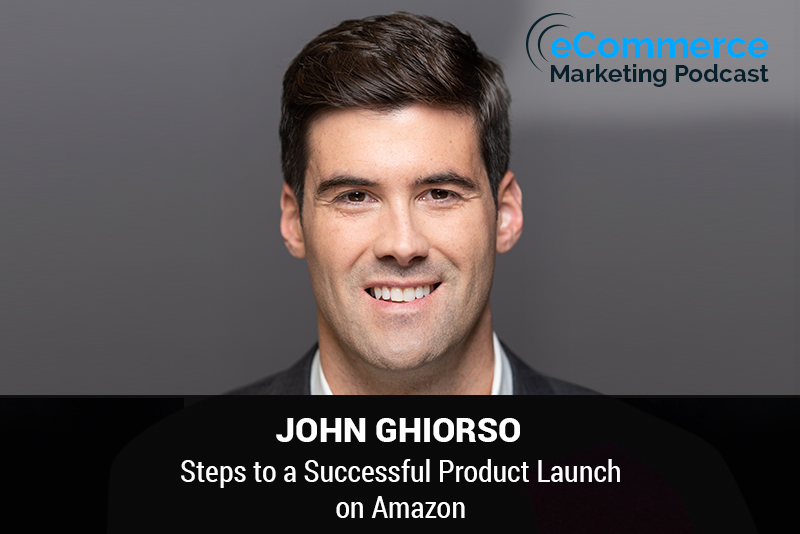
The eCommerce Marketing Podcast walks you through everything that goes into ecommerce marketing — from inbound marketing to paid advertising to conversions. Learn the strategies top marketing experts use to grow their businesses.
Marketing Strategies Revealed in this Episode:
- What to do before selling on Amazon
- The initial steps to get listed on Amazon and to start selling
- The basic marketing strategy to drive customer traffic and optimize performance
- The best types of products to sell on Amazon
- What you can learn from the top Amazon sellers

Episode Title: Strategies for a Successful Product Launch on Amazon with John Ghiorso
Guest: John Ghiorso, Founder and CEO of Orca Pacific
In this episode of the eCommerce Marketing Podcast, host Arlen Robinson interviews John Ghiorso, the founder and CEO of Orca Pacific. John shares his insights on launching and optimizing products on Amazon, discussing the initial steps to take, marketing strategies to employ, and how to differentiate from competitors. With over a decade of experience and proximity to Amazon’s headquarters, John provides a wealth of knowledge for brands looking to succeed on the platform.
Key Takeaways:
- Introduction to John Ghiorso and Orca Pacific (00:01:00):
- Overview of Orca Pacific’s services and history.
- Importance of location and face-to-face meetings with Amazon managers.
- Initial Considerations Before Selling on Amazon (00:03:30):
- Transition from an organic to a pay-to-play platform.
- Importance of budget and realistic expectations due to high competition.
- Setting Up and Listing on Amazon (00:06:00):
- Steps to set up a Seller Central account.
- Importance of SEO-optimized content and early advertising efforts.
- Marketing Strategy for Driving Traffic and Optimizing Performance (00:09:20):
- Focus on high-quality content and aggressive advertising.
- Importance of glance views (traffic) and conversion rate optimization.
- Achieving Prime Eligibility (00:15:30):
- Necessity of having a Prime badge for visibility and sales.
- Options: Fulfilled by Amazon (FBA) and Seller Fulfilled Prime.
- Is Every Product Right for Amazon? (00:19:00):
- Virtually every product can be successful on Amazon with the right strategy.
- Consideration of product weight and shipping costs for very heavy items.
- Effective Strategies for Getting Reviews (00:22:30):
- Legitimate ways: Early Reviewer Program and Vine.
- Caution against using black market review tactics.
- Learning from Top Amazon Sellers (00:26:40):
- Case study: Anker’s success on Amazon.
- Importance of testing new Amazon programs and adapting quickly.
Guest Information:
- Name: John Ghiorso
- Position: Founder and CEO of Orca Pacific
- Contact:
- LinkedIn: John Ghiorso
- Website: Orca Pacific











